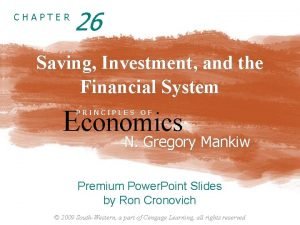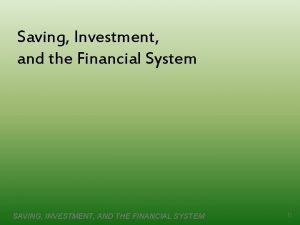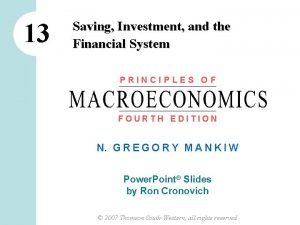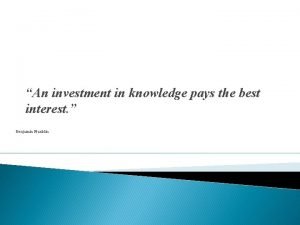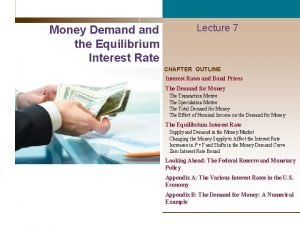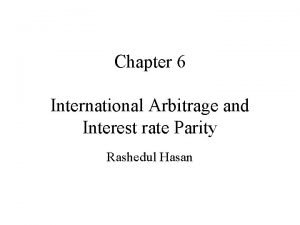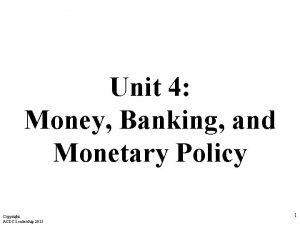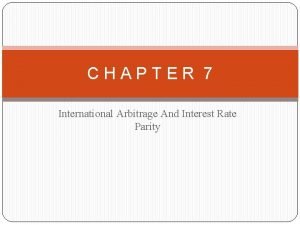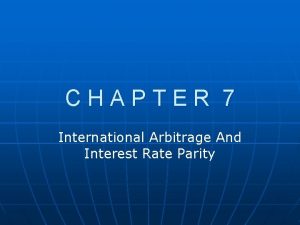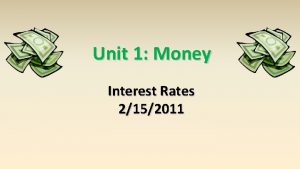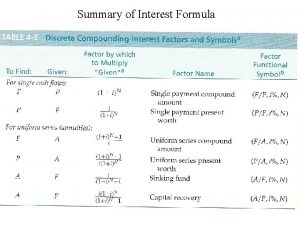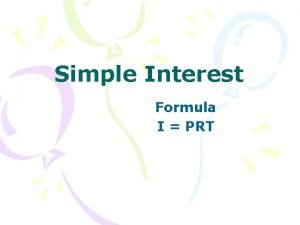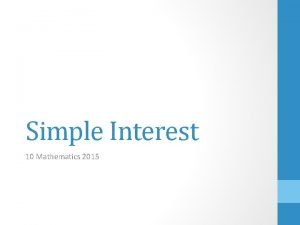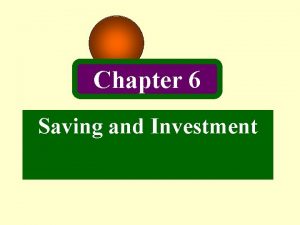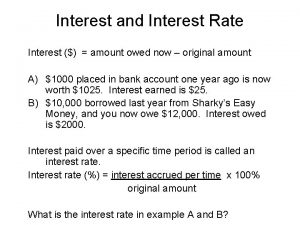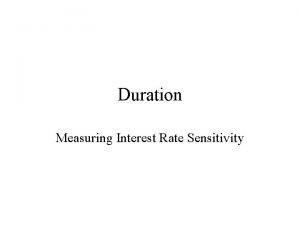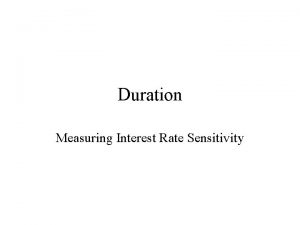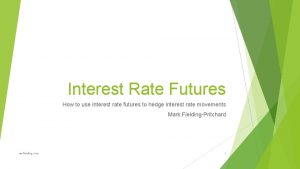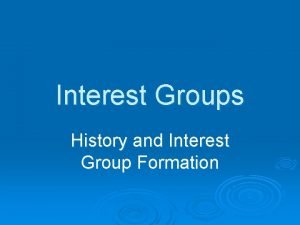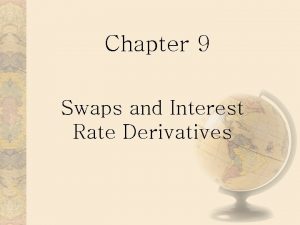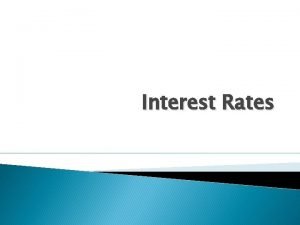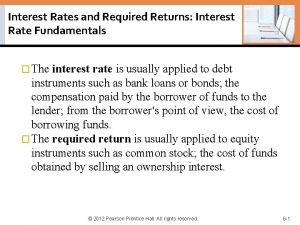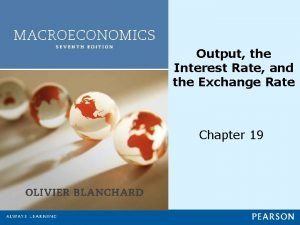Investment Saving and the Interest Rate Investment and

















- Slides: 17

Investment, Saving, and the Interest Rate Investment and Capital The capital stock is the total amount of plant, equipment, buildings, and inventories. Gross investment is the purchase of new capital. Depreciation is the wearing out of the capital stock. Net investment equals gross investment minus depreciation, and net investment is the addition to the capital stock.

Investment, Saving, and the Interest Rate Investment Decisions Business investment decisions are influenced by § The expected profit rate § The real interest rate

Investment, Saving, and the Interest Rate The Expected Profit Rate §The expected profit rate is high when the economy is expected to grow fast and relatively low when an economic slowdown is expected. §Advances in technology can increase the expected profit rate. §Taxes affect the expected profit rate because firms are concerned about after-tax profits.

Investment, Saving, and the Interest Rate The Real Interest Rate §The real interest rate is the opportunity cost of the funds used to finance investment. §Regardless of whether a firm borrows or uses its own financial resources, it faces this opportunity cost. §Either it pays the interest or it forgoes interest on its own funds.

Investment, Saving, and the Interest Rate Project 1 2 Funds Expec needed ted profit rate $200, 00 25% 0 $200, 00 0 15% 3 $200, 00 10% 0 4 $200, 00 7% 0 be taken if the interest rate is 8%? What projects should 5 $200, 00 5%

Investment, Saving, and the Interest Rate Investment Demand Investment demand is the relationship between the level of planned investment and the real interest rate.

Investment, Saving, and the Interest Rate The investment demand curve slopes downward. A fall in the real interest rate increases planned investment along investment demand curve. A rise in the real interest rate decreases planned investment along investment demand curve.

Investment, Saving, and the Interest Rate Saving Investment is financed by national saving and borrowing from the rest of the world. Saving is current income minus current expenditure, and in part finances investment.

Investment, Saving, and the Interest Rate Personal saving is personal disposable income minus consumption expenditure. Business saving is retained profits and additions to pension funds by businesses. Government saving is the government’s budget surplus. Any of these components can be negative. National saving is the sum of private saving and government saving. Households divide their disposable income between consumption expenditure and saving.

Investment, Saving, and the Interest Rate Saving is influenced by § The real interest rate § Disposable income § Wealth § Expected future income

Investment, Saving, and the Interest Rate Real Interest Rate The higher the real interest rate, the greater is a household’s opportunity cost of consumption and so the larger is the amount of saving. Disposable Income The higher the disposable income, the greater is a household’s saving.

Investment, Saving, and the Interest Rate Wealth The greater is a household’s wealth, other things remaining the same, the greater is its consumption and the less is its saving. Expected Future Income The higher a household’s expected future income, the greater is its current consumption and the lower is its current saving.

Investment, Saving, and the Interest Rate Saving Supply Saving supply is the relationship between saving and the real interest rate, other things remaining the same.

Investment, Saving, and the Interest Rate A fall in the real interest rate decreases saving. A rise in the real interest rate increases saving.

Investment, Saving, and the Interest Rate Determining the Real Interest Rate The real interest rate is determined by investment demand supply of savings.

Investment, Saving, and the Interest Rate If the interest rate is above its equilibrium level, SS exceeds ID. There is a surplus of funds and the interest rate falls. If the interest rate is below its equilibrium level, ID exceeds SS. There is a shortage of funds and the interest rate rises.

Investment, Saving, and the Interest Rate The equilibrium real interest rate is 6 percent. At the equilibrium real interest rate, there is neither a shortage nor surplus of saving.
 Real vs nominal interest rate
Real vs nominal interest rate Cap rate interest rate relationship
Cap rate interest rate relationship Mankiw chapter 26 solutions
Mankiw chapter 26 solutions National saving
National saving Saving investment and the financial system
Saving investment and the financial system Simple interest
Simple interest Nominal rate of interest
Nominal rate of interest An investment in knowledge always pays the best interest
An investment in knowledge always pays the best interest Fixed investment and inventory investment
Fixed investment and inventory investment Money demand and interest rate
Money demand and interest rate Locational parity
Locational parity Decreasing money supply
Decreasing money supply Interest rate arbitrage
Interest rate arbitrage Covered interest arbitrage
Covered interest arbitrage Interest rate effect
Interest rate effect Discrete compound interest formula
Discrete compound interest formula (i=prt)
(i=prt) How to find principal amount
How to find principal amount


